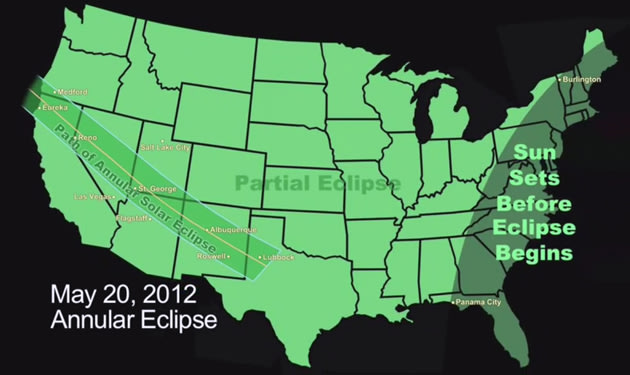Phoenix
Well-Known Member
- Messages
- 6,814
- Reaction score
- 1,419
Rats. We won't get to see this on the East Coast.
http://news.yahoo.com/sunday-solar-eclipse-visible-national-parks-195845913.html
When the sun vanishes behind the moon for the first time over the United States in this century, what better place to enjoy the view than from one of the 154 national parks that stand in its path?
Astronomy lovers in the United States will be treated to a partial disappearance of the sun behind the moon this Sunday (May 20). Only the Eastern Seaboard will be totally exempt. The eclipse will occur in the late afternoon or early evening of May 20 throughout North America, and May 21 for observers in Asia.
Over the course of the solar eclipse, the sun won't vanish completely, but will remain as a ring around the moon for what is known as an annular eclipse. When the eclipse occurs, the moon will be near its most distant point from Earth, making it appear smaller in the sky and thus unable to block the entire sun. But it will still be a stunning sight.

http://news.yahoo.com/sunday-solar-eclipse-visible-national-parks-195845913.html
When the sun vanishes behind the moon for the first time over the United States in this century, what better place to enjoy the view than from one of the 154 national parks that stand in its path?
Astronomy lovers in the United States will be treated to a partial disappearance of the sun behind the moon this Sunday (May 20). Only the Eastern Seaboard will be totally exempt. The eclipse will occur in the late afternoon or early evening of May 20 throughout North America, and May 21 for observers in Asia.
Over the course of the solar eclipse, the sun won't vanish completely, but will remain as a ring around the moon for what is known as an annular eclipse. When the eclipse occurs, the moon will be near its most distant point from Earth, making it appear smaller in the sky and thus unable to block the entire sun. But it will still be a stunning sight.


